Salvatore Celozzi, Rodolfo Araneo, Giampiero Lovat9780470055366, 0470055367
This reference provides a comprehensive survey of options for the reduction of the electromagnetic field levels in prescribed areas. After an introduction and an overview of available materials, it discusses figures of merit for shielding configurations, the shielding effectiveness of stratified media, numerical methods for shielding analyses, apertures in planar metal screens, enclosures, and cable shielding. Up to date and comprehensive, Electromagnetic Shielding:
Explores new and innovative techniques in electromagnetic shielding
Presents a critical approach to electromagnetic shielding that highlights the limits of formulations based on plane-wave sources
Analyzes aspects not normally considered in electromagnetic shielding, such as the effects of the content of the shielding enclosures
Includes references at the end of each chapter to facilitate further study
The last three chapters discuss frequency-selective shielding, shielding design procedures, and uncommon ways of shielding—areas ripe for further research. This is an authoritative, hands-on resource for practicing telecommunications and electrical engineers, as well as researchers in industry and academia who are involved in the design and analysis of electromagnetic shielding structures.
Table of contents :
Electromagnetic Shielding……Page 3
Contents……Page 7
Preface……Page 13
1.1 Definitions……Page 15
1.2 Notation, Symbology, and Acronyms……Page 17
1.3.1 Macroscopic Electromagnetism and Maxwell’s Equations……Page 18
1.3.2 Constitutive Relations……Page 20
1.3.3 Discontinuities and Singularities……Page 23
1.3.5 Poynting’s Theorem and Energy Considerations……Page 25
1.3.6 Fundamental Theorems……Page 27
1.3.7 Wave Equations, Helmholtz Equations, Electromagnetic Potentials, and Green’s Functions……Page 29
1.5 Source Inside or Outside the Shielding Structure and Reciprocity……Page 32
References……Page 33
2.1 Standard Metallic and Ferromagnetic Materials……Page 35
2.2 Ferrimagnetic Materials……Page 41
2.3 Ferroelectric Materials……Page 42
2.4 Thin Films and Conductive Coatings……Page 44
2.5.2 Conductive Polymers……Page 46
2.6.1 Metamaterials and Chiral Materials……Page 47
2.6.2 Composite Materials……Page 50
2.6.4 High-Temperature Superconductors……Page 51
References……Page 52
3.1 (Local) Shielding Effectiveness……Page 56
3.2 The Global Point of View……Page 59
3.3 Other Proposals of Figures of Merit……Page 60
3.4 Statistical Methods……Page 64
3.5 Energy-Based, Content-Oriented Definition……Page 66
References……Page 67
4.1 Electromagnetic Plane Waves: Definitions and Properties……Page 69
4.2.1 Transmission-Line Approach……Page 72
4.2.2 The Single Planar Shield……Page 75
4.2.3 Multiple (or Laminated) Shields……Page 80
4.3 Plane Waves Normally Incident on Cylindrical Shielding Surfaces……Page 81
4.4 Plane Waves against Spherical Shields……Page 88
4.5 Limits to the Extension of the TL Analogy to Near-Field Sources……Page 89
References……Page 98
5 Numerical Methods for Shielding Analyses……Page 101
5.1 Finite-Element Method……Page 103
5.2 Method of Moments……Page 113
5.3 Finite-Difference Time-Domain Method……Page 124
5.4 Finite Integration Technique……Page 133
5.5 Transmission-Line Matrix Method……Page 138
5.6 Partial Element Equivalent Circuit Method……Page 141
5.7 Case Study: Scattering from a Perfectly Conducting Enclosure with a Rectangular Aperture……Page 148
References……Page 151
6 Apertures in Planar Metal Screens……Page 158
6.1 Historical Background……Page 159
6.2 Statement of the Problem……Page 160
6.3 Low-Frequency Analysis: Transmission through Small Apertures……Page 161
6.4 The Small Circular-Aperture Case……Page 162
6.5 Small Noncircular Apertures……Page 168
6.6 Finite Number of Small Apertures……Page 169
6.7 Rigorous Analysis for Apertures of Arbitrary Shape: Integral Equation Formulation……Page 171
6.8 Rules of Thumb……Page 174
References……Page 175
7 Enclosures……Page 178
7.1 Modal Expansion of Electromagnetic Fields inside a Metallic Enclosure……Page 179
7.2 Oscillations inside an Ideal Source-Free Enclosure……Page 182
7.3 The Enclosure Dyadic Green Function……Page 183
7.4 Excitation of a Metallic Enclosure……Page 186
7.5 Damped Oscillations inside Enclosures with Lossy Walls and Quality Factor……Page 187
7.6 Apertures in Perfectly Conducting Enclosures……Page 189
7.6.1 Small-Aperture Approximation……Page 190
7.6.2 Rigorous Analysis: Integral-Equation Formulation……Page 192
7.6.3 Aperture-Cavity Resonances……Page 194
7.7 Small Loading Effects……Page 197
7.8 The Rectangular Enclosure……Page 198
7.8.1 Symmetry Considerations……Page 201
7.9 Shielding Effectiveness of a Rectangular Enclosure with a Circular Hole……Page 202
7.9.1 External Sources: Plane-Wave Excitation……Page 203
7.9.2 Internal Sources: Electric and Magnetic Dipole Excitations……Page 206
References……Page 212
8 Cable Shielding……Page 214
8.1 Transfer Impedance in Tubular Shielded Cables and Aperture Effects……Page 215
8.2 Relationship between Transfer Impedance and Shielding Effectiveness……Page 220
8.3 Actual Cables and Harnesses……Page 221
References……Page 222
9.1 Gaskets……Page 224
9.2 Shielded Windows……Page 228
9.3 Electromagnetic Absorbers……Page 229
9.5 Air-Ventilation Systems……Page 230
References……Page 231
10 Frequency Selective Surfaces……Page 233
10.1.1 Floquet’s Theorem and Spatial Harmonics……Page 234
10.1.2 Plane-Wave Incidence on a Planar 1D Periodic Structure……Page 236
10.1.3 Plane-Wave Incidence on a Planar 2D Periodic Structure……Page 237
10.2 High- and Low-Pass FSSs……Page 239
10.3 Band-Pass and Band-Stop FSSs……Page 242
10.3.1 Center-Connected Elements or N-Pole Elements……Page 243
10.3.3 Solid-Interior-Type Elements……Page 244
10.4 Degrees of Freedom in Designing FSSs……Page 245
10.5 Reconfigurable and Active FSSs……Page 246
10.6 FSSs and Circuit Analog Absorbers……Page 248
10.7 Modeling and Design of FSSs……Page 249
References……Page 250
11 Shielding Design Guidelines……Page 255
11.1 Establishment of the Shielding Requirements……Page 256
11.2 Assessment of the Number and Types of Functional Discontinuities……Page 257
11.3 Assessment of Dimensional Constraints and Nonelectromagnetic Characteristics of Materials……Page 258
11.4 Estimation of Shielding Performance……Page 259
References……Page 260
12.1 Active Shielding……Page 261
12.2 Partial Shields……Page 266
12.3 Chiral Shielding……Page 269
12.4 Metamaterial Shielding……Page 270
References……Page 274
Appendix A Electrostatic Shielding……Page 277
A.1 Basics Laws of Electrostatics……Page 278
A.2 Electrostatic Tools: Electrostatic Potential and Green’s Function……Page 280
A.3.1 Conductive Electrostatic Shields……Page 284
A.3.2 Dielectric Electrostatic Shields……Page 288
A.3.3 Aperture Effects in Conductive Shields……Page 293
References……Page 295
Appendix B Magnetic Shielding……Page 296
B.1 Magnetic Shielding Mechanism……Page 297
B.2 Calculation Methods……Page 300
B.3.1 Spherical Magnetic Conducting Shield……Page 302
B.3.2 Cylindrical Magnetic Conducting Shield in a Transverse Magnetic Field……Page 307
B.3.3 Cylindrical Magnetic Conducting Shield in a Parallel Magnetic Field……Page 311
B.3.4 Infinite Plane……Page 315
References……Page 328
Appendix C Standards and Measurement Methods……Page 331
C.1 MIL-STD 285 and IEEE STD-299……Page 333
C.2 NSA 65-6 and NSA 94-106……Page 338
C.3 ASTM E1851……Page 339
C.4 ASTM D4935……Page 340
C.5 MIL-STD 461E……Page 342
C.6 Code of Federal Regulations, Title 47, Part 15……Page 349
C.7 ANSISCTE 48-3……Page 351
C.8 MIL-STD 1377……Page 352
C.9 IEC Standards……Page 353
C.10 ITU-T Recommendations……Page 358
C.11 Automotive Standards……Page 360
References……Page 364
Index……Page 367
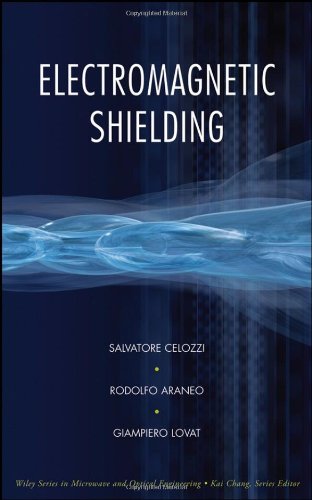

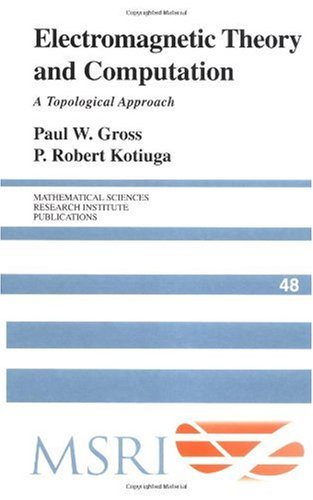
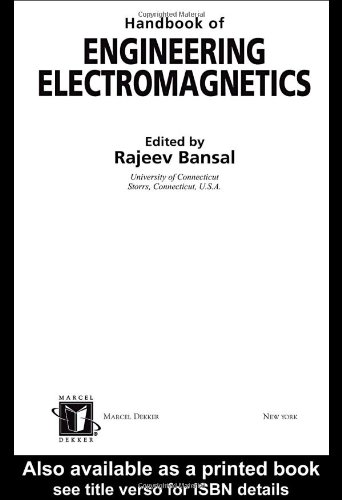
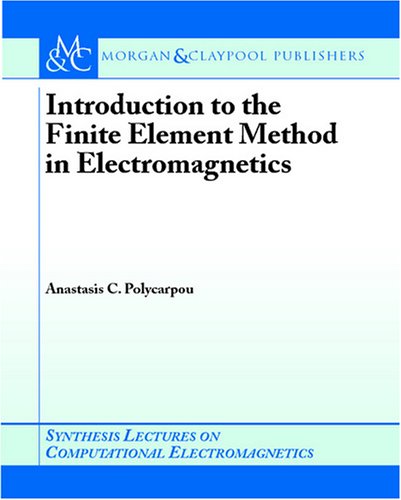
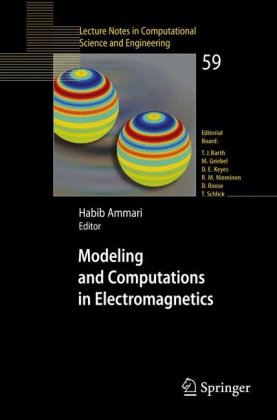

Reviews
There are no reviews yet.